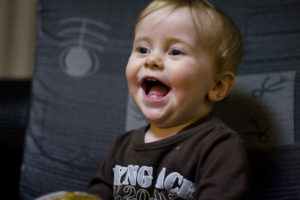 While I believe that teaching our children to sleep is one of our responsibilities as parents, I also believe that we must help our sons and daughters develop self-esteem. And the good news is that good sleep and self-esteem often go hand in hand.
While I believe that teaching our children to sleep is one of our responsibilities as parents, I also believe that we must help our sons and daughters develop self-esteem. And the good news is that good sleep and self-esteem often go hand in hand.
Self-esteem refers to how we feel about ourselves. Individuals with high self-esteem meet the challenges of life with strength, courage and self-confidence. Here are some ways you can encourage your child’s positive self-esteem:
Provide your child with firm, simple, non-punitive limits for behavior.
Sometimes we mistakenly believe that our child’s positive sense of self can best come from giving them free rein, from never saying no, from never setting a limit. In contrast, I believe that children need some simple, reasonable limits – the world is scary if a child thinks that anything goes, that no one is in charge. We also can’t eliminate all frustration from our children’s lives, they need to learn, just a little bit at a time, how to cope with it. Just as we teach our children not to throw sand at the park, we can establish firm limits about acceptable bedtime and middle of the night behavior.
Praise and encourage your child at every opportunity!
Be specific in your praise and encourage your child by showing confidence, and by noting progress, improvement and independent action. For instance, say, “I like it when you set the table without my having to remind you” or “You made me so proud when you put away your toy.” Carry this pride into bedtime and sleep behavior. For instance, if he stays in his bed all night, say. “I am so proud of you for staying in your bed. You must feel like such a big boy.” If she read books quietly in her room instead of waking you up at 6 a.m, tell her that you recognize what a big achievement that is. Children have to learn to please themselves in order for their positive self-esteem to grow!
Whenever possible avoid power struggles and win/lose confrontations.
Try to avoid the trap of offering questions that may not elicit the answer you were hoping for. For instance, if you say, “Would you like to take a bath now?” Your child might say “NO!” Instead, show your child that you respect his choices – but make sure the choices don’t lead to a power struggle. Try, “It’s time for a bath now. Why don’t you pick out which toys you want to play with in the tub?” Or instead of saying, “Do you want to go to bed now,” say, “Its bedtime. What pajamas do you want to wear tonight?”
Allow and encourage a wide range and expression of feeling while limiting behavior.
Everyone, including children, has a right to his or her feelings. Provide acceptable outlets for strong feelings. For instance, “When you stop shouting, I’ll be happy to talk with you” as you calmly leave the room, instead of saying, “How dare you shout at me that way!” Leave your child an out, a way of recovering and making things better.
Establish healthy sleep habits.
It is never too late! The process of falling asleep is learned. Try to avoid making your child feel bad if she has trouble falling asleep on her own, or if he still wakes you up at night. But as you coach your child into better sleep habits, make sure you give him or her lots of praise and recognition for progress.
Was this article helpful to you? Please tell us by commenting below! For more baby, toddler, and family sleep tips and tricks, please subscribe to The Sleep Lady’s Facebook, Twitter, Pinterest, Google+, and YouTube channel! If you are looking for more sleep content, please check out Get Sleep Now-an exclusive members-only area designed to provide in-depth help and support during your sleep coaching experience.
photo credit: storyvillegirl via photopin cc






